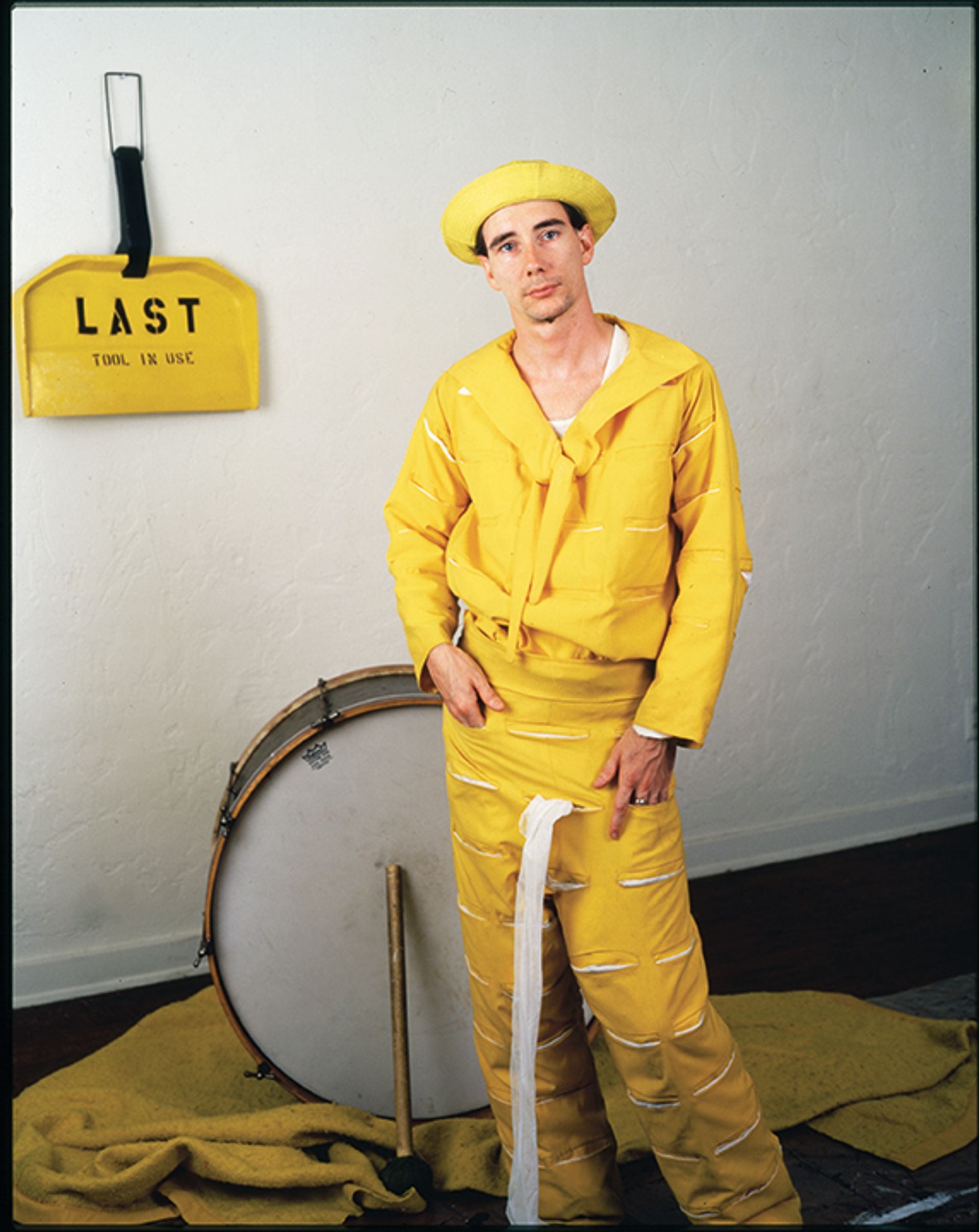When the US artist Mike Kelley died in 2012, The New York Times labelled him an “artist with attitude” due to his sardonic send-ups of aesthetic trends like Minimalism and wildly meandering narratives drawn from popular and underground culture, literature and philosophy. “Art is about fucking things up for the pure pleasure of fucking things up,” Kelley said in a 2004 interview (the film, 105 Minutes with Mike, is archived on YouTube).
Ghost and Spirit, an exhibition at Tate Modern, revisits the experimental, anarchic and influential work of the artist, whose practice from the late 1970s to his death straddles drawing, collage, performance and video.
The show’s co-curator Fiontán Moran argues that Kelley’s work “absolutely resonates today”, his legacy underpinning the work of artists and the wider world. “His work asks significant and prescient questions about the role of art and the identity of the artist, the experience of living in a hyper-mediated society, and obsessions with various forms of belief systems,” Moran says. “He was very much aware of his position as a white working-class man in postmodern, capitalist America, and his work actively leans into the complicated reality of this world.”

Jim McHugh’s portrait of Kelley as The Banana Man (around 1983), with Last Tool in Use (1977) in the background © Jim McHugh
Tate Modern’s exhibition features some of Kelley’s most important works, from drawings and collages to videos, performances and multimedia installations. “Some highlights include his pivotal and unnerving work The Poltergeist (1979), a seven-part photographic work depicting Kelley apparently in the midst of ‘communing’ with spirits, that was created to mimic spiritualist photography from the early 20th century,” Moran says.
The exhibition also includes Kelley’s key early installations, such as the Monkey Island project (1982-83), his first solo video work The Banana Man (1982) and More Love Hours Than Can Ever Be Repaid and The Wages of Sin (1987), which marks the first time Kelley used stuffed-toy animals as a medium.
This assemblage of grotesque dolls and toys shown alongside an altar of melted candles prompts questions about teen angst and the possible futility of toiling over crocheted handicrafts (the piece is also thought to draw on Abstract Expressionist art, ironically echoing Jackson Pollock’s drip paintings).
“A slideshow of images will represent the major work Educational Complex (1995), a large sculptural model of every place that Kelley had been educated, and we will feature the connected work Sublevel (1998), a large-scale model of the basement of CalArts [California Institute of the Arts] lined with pink crystal resin,” Moran says.
Memory and repressed desire
The exhibition culminates with Kelley’s later installations that continued his exploration of the role of memory and repressed desire, including the epic multi-part project Extracurricular Activity Projective Reconstruction (2000-11) and works from the Kandors series (1999–2011), which are sculptural depictions of Superman’s fictional birthplace, Kandor. This series includes dramatic, glowing depictions of model cities often placed under bell jars.
The exhibition will be shown at four venues in total. It has already been seen at Bourse de Commerce in Paris and K21, Kunstsammlung Nordrhein-Westfalen in Düsseldorf. After Tate Modern it travels to Moderna Museet in Stockholm (12 April-14 September 2025). “The exhibition was devised by Tate Modern and each touring venue has followed the same curation concept for the show, informed by major themes that Kelley explored throughout his practice,” Moran says.
The Tate presentation is the first venue to include Kelley’s Sublevel installation, the mixed-media piece Extracurricular Activity Projective Reconstruction (Singles’ Mixer) (2004) and the video Bridge Visitor (Legend-Trip) (2004), based on a teenager’s story about exploring a haunted site at night.
Kelley’s art is known for being searingly funny; indeed the writer Charlie Fox says in the latest edition of Tate Etc. magazine: “I don’t think anybody in art history has been funnier than Mike Kelley. His art is very American, just as much as it can be sinister or deeply sad.”
Does Moran agree? “He’s certainly one of the artists who has effectively used humour, often a dark sarcastic humour, to convey his love of ambiguity, double meanings, and role play. Just as jokes form a dialogue, his works play with the viewer’s expectation in ways that reimagine and subvert how we see the world around us. He found great pleasure in his brand of negative joy.”
• Mike Kelley: Ghost and Spirit, Tate Modern, until 9 March 2025


